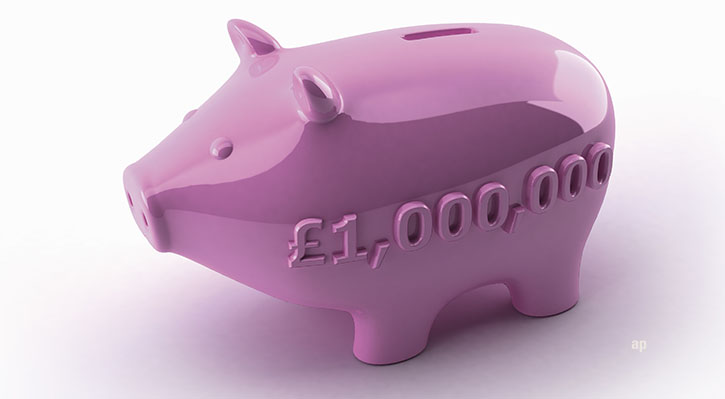
The Individual Savings Account (ISA) is now in its 24th year and is a popular way for savers and investors to shelter their nest eggs from HMRC.
Later in this Special Report Week we'll delve deeper into ISAs, but for now here are the basics you need to know:
What Are the Main Types of Isa?
The most popular types Cash, Stocks and Shares and Lifetime ISAs. Other versions include the Innovative Finance ISA. There's also a Junior ISA. Previous iterations include the Help to Buy ISA. The UK government website has a good overview.
Why Should I Choose an Isa?
It’s generally understood that ISAs are “tax-free” but it’s worth explaining what this actually means. Firstly, you don’t need to include your ISA on your annual tax return (if you file one), as tax is not paid on dividends or savings interest received within the ISA. Another advantage is that ISAs are free of Capital Gains Tax, so you don’t need to share your investment returns with HMRC. But ISAs are NOT automatically exempt from Inheritance Tax so if they’re large enough, your ISAs may form part of your estate.
How does the ISA Allowance Work?
Each individual has an annual ISA allowance. Under the current limits, a family of two adults and two children could put away £58,000 a year into these accounts. The generous allowances mean few people will "max out" their allowance every year, however. As an adult you can open one type of each ISA every tax year, but the allowance applies to the money you spread across these accounts, it is not per account.
Rules were updated a few years ago which mean with some accounts you can withdraw money from your ISA and not lose that part of your allowance i.e. if you put £10,000 into an ISA then withdraw £2,000, you still have £12,000 of that year's allowance left to invest. These accounts are known as flexible ISAs and if this feature is important to you, make sure you check whether it's available before opening your account.
Does the Allowance Go Up Every Year?
The main allowance was increased to £20,000 in 2017 but the current chancellor, Jeremy Hunt, has indicated that this will be frozen for a number of tax years.
What if I Don’t Have £20,000 to Invest?
The fact is, most people don't have £20,000 to invest each year. Many providers allow you to open an account with as little as £1 and you can add small amounts throughout the year, either through a regular investing plan or through ad hoc investments - you don't have to put your money into an account in a single lump sum.
Is Age Important?
You need to be 16 or over to open your own Cash ISA, and 18 and over to buy a Stocks and Shares or Innovative Finance ISA. For the Lifetime ISA, you need to be over 18 but under 40. Parents can open a Junior ISA for their child any time from birth to age 16 (and grandparents can contribute to it too).
Is There a Time Limit?
The allowance runs from tax year to tax year (April 6 to April 5) and it’s “use it or lose it”, so you can’t roll over unused allowances. The limit resets every April though.
Can I Mix and Match Accounts?
Yes. You can open one of each type of ISA every tax year - so you could feasibly have a Cash ISA, Lifetime ISA, Stocks and Shares ISA and Innovative Finance ISA and split your £20,000 between them as you please. You cannot, however, open two of the same sort of ISA in a single tax year. The same rule applies to Junior ISAs. With that in mind, it's likely that you may end up ISAs from a number of providers over the years - some accounts allow transfers in if you're looking to consolidate your savings into one pot without using up your allowance for that year.
What if I Need the Money?
ISAs are not subject to the same rules as pensions and there is no penalty for withdrawing your money (apart from with Lifetime ISAs, the rules of which we'll explain in a separate article). Easy access Cash ISAs allow you to withdraw your money at any time, and with Stocks and Shares ISAs you are free to buy and sell investments as you please. In theory, you can put this money back in during the tax year, but this depends on whether you have a Flexible ISAs.
Am I Protected if My Provider Goes Bust?
Most Cash ISAs are covered by the Financial Services Compensation Scheme, which guarantees your deposits up to £85,000 in total. Investment-based ISAs may be protected if your provider goes bust but not if you simply make bad investments and lose money.
Can I Put Bitcoin in My ISA?
The range of potential investments you can hold is pretty varied, but cryptocurrencies are not currently one of them. You can hold shares (including Aim shares), funds, gilts, ETFs, investment trusts and peer-to-peer loans in an ISA, but property and alternative assets like classic cars, fine wine, art cannot be brought held within the tax wrapper.
How Does HMRC Know if I Go Over My Limit?
ISA providers are obliged to provide contribution histories to HMRC. If you go over your limit without realising it, HMRC will contact you and you can arrange to correct the underpaid tax. HMRC has a dedicated ISA helpline if you think you’ve done this. Alternatively, your provider can tell you how much you’ve put in in this tax year, but if you have multiple types of ISA it's up to you to keep track of the total as providers will not communicate with each other.
I Am About to Move Abroad. Can I Still Have an ISA?
ISAs are available to UK residents, so you can’t put money in an ISA the tax year after you move (unless you’re a Crown employee). You still get tax relief on existing ISAs though, and can restart payments if you move back to the UK. The onus is on you to tell your ISA provider if you move abroad.
What’s a Bed & ISA?
This involves selling investments outside of the ISA wrapper and rebuying them, taking advantage of the Capital Gains Tax allowance of £12,300 (although this is changing from the next tax year). Ask a financial adviser how to do this.




























